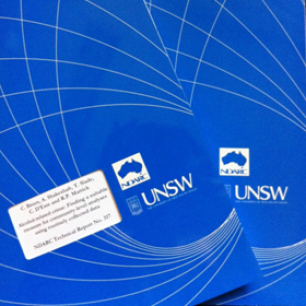NDARC Technical Report No. 304 (2009)
EXECUTIVE SUMMARY
Alcohol is the most widely consumed legal drug in Australia and across the world. Alcohol use and abuse in young people has been an ongoing problematic health issue for the Australian public health sector and the community. Binge drinking and risky drinking behaviours tend to be the primary drinking behaviours for this client population. Young males continue to drink more frequently and have higher consumption levels compared to their female counterparts, although these behaviours are increasing among young females. Engagement in these drinking behaviours and thus acute intoxication often results in young people being placed at risk of social problems and harm from accidents, and physical and sexual assaults. In particular, young females who are intoxicated are more at risk of verbal and sexual abuse, whilst young males are more at risk of verbal abuse, physical abuse and drink driving.
Young people who are considered 'at risk' of social and family dysfunction tend to be more vulnerable to alcohol and other drug use and abuse problems. Young people who are considered to be in this 'at risk' group include homeless youth and young people in rural and remote areas (in particular, Indigenous young people). The most prominent risk factors for problem drinking are: being male; observing moderate maternal drinking behaviours; externalising behaviours at 14 years of age; lack of parental support and supervision; associating with peers who drink; and early onset of drinking. However, the pathway to problem drinking is multifactorial and relies on a combination of the presence of risk and protective factors that are unique to each young person.
Treatment of alcohol and problem drinking in young people needs to be tailored to the combination of risk and protective factors, as well as the developmental stages of adolescence. Primary prevention strategies on alcohol in this client population are predominantly abstinence based and tend to be taught in school settings. Research into these abstinence-based approaches has found that they are generally not effective. Secondary preventions strategies (including harm minimisation strategies) such as controlled drinking and brief interventions (using motivational interviewing and cognitive-behavioural therapy) tend to be the most efficacious with this client population. This is most likely due to a combination of beliefs about drinking in the Australian culture and the prominence of experimentation as a developmental process during adolescence.
The four-session group intervention presented here was developed taking into consideration the developmental pathway of adolescence and other investigations into drinking behaviours in this client population. The program involves the implementation of psycho-education about alcohol, controlled drinking strategies, and refusal skills within a harm minimisation and motivational interviewing framework. This manual was the intervention used in the following study: Bailey, KA., Baker, A.L., Webster, R.A. & Lewin, T.J. (2004). Pilot randomised controlled trial of a brief alcohol intervention group for adolescents. Drug and Alcohol Review 23, 157-166.


